It's the first day of winter! Let's see what wildlife is busy, on a walk through the woods of Arkansas. It's easy to see who's out and about when there's a light skiff of snow.
Thanks for coming along on a walk with me! Let's go for a ramble at my parents' place -- 45 acres atop the sandstone in the Boston Mountains in north central Arkansas. The dusting of snow lets us see what animals have been busy. This walk is from January 2017.
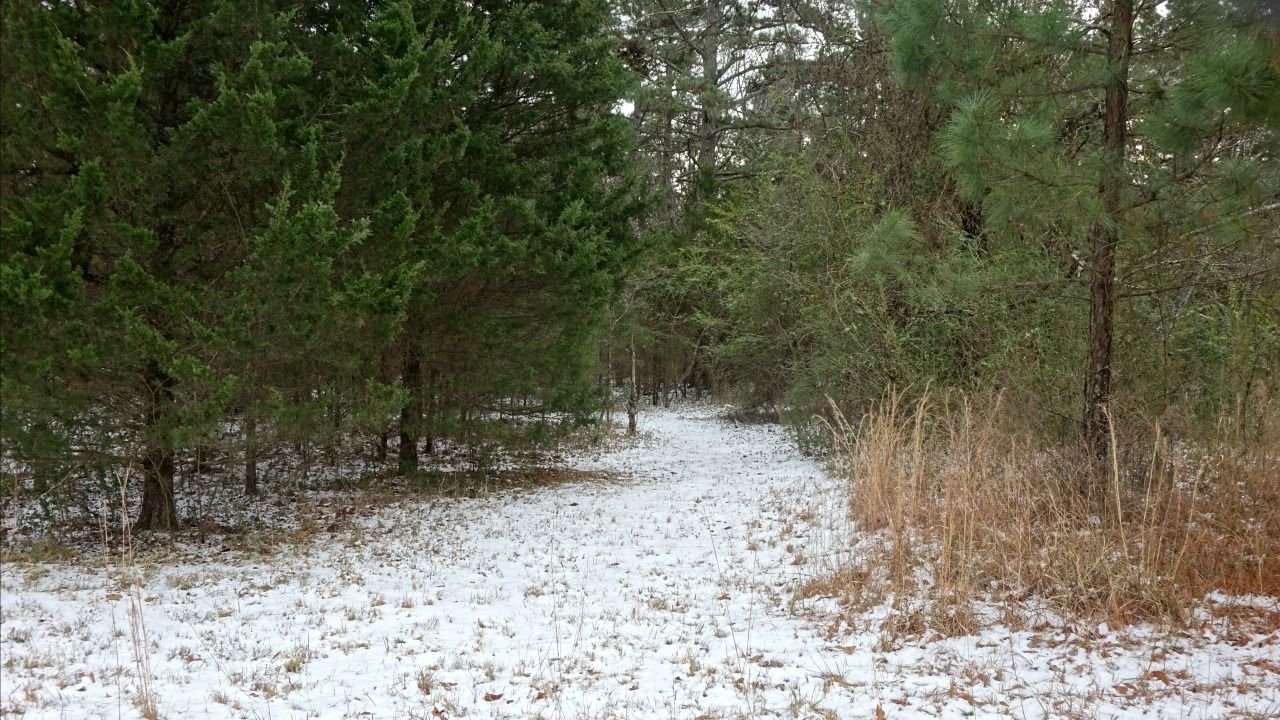 Let's head out through the cedars and pines. They are mostly Eastern Red Cedars, with such fragrant wood, and Shortleaf Pines.
Let's head out through the cedars and pines. They are mostly Eastern Red Cedars, with such fragrant wood, and Shortleaf Pines.
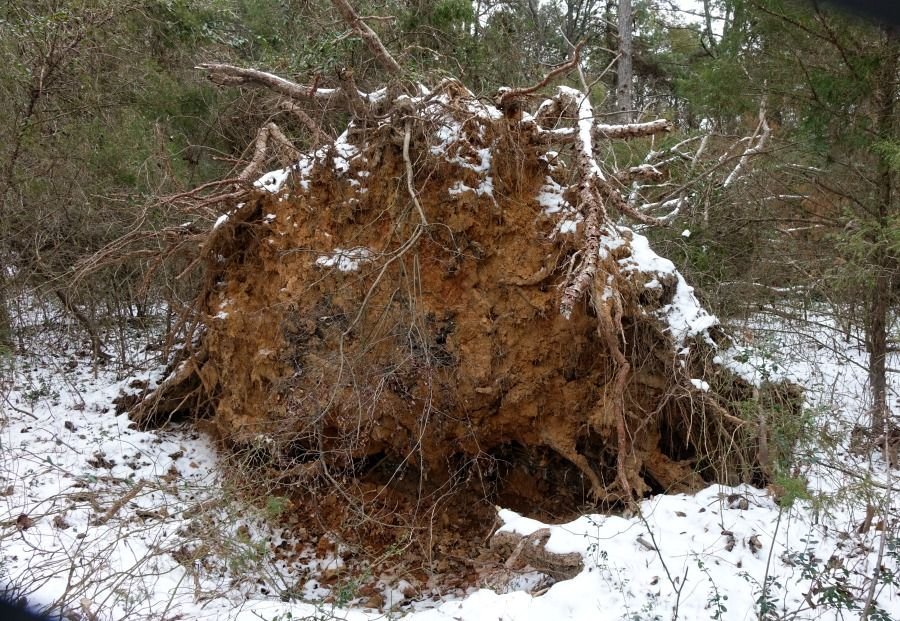 The pines are not rooted very deep. Big windstorms regularly blow down a tree here and there, revealing the rocky sandstone-based soil. How big is that root wad?
The pines are not rooted very deep. Big windstorms regularly blow down a tree here and there, revealing the rocky sandstone-based soil. How big is that root wad?
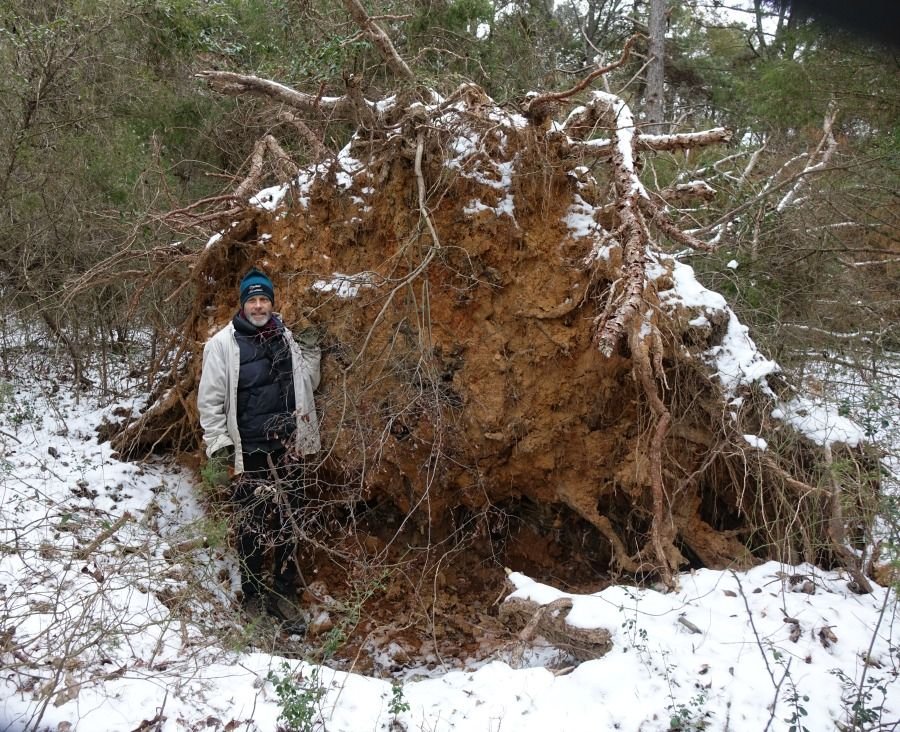 That guy is 6-foot 3 inches tall, so that's a big root wad!
That guy is 6-foot 3 inches tall, so that's a big root wad!
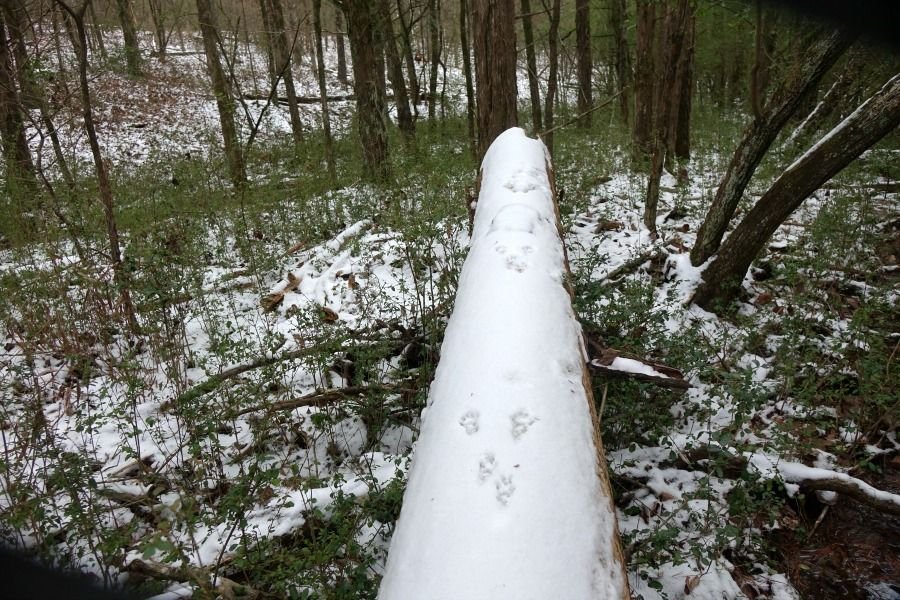 The woods are full of blow-downs. They eventually rot and nourish the forest ecosystem. Before that, they make a great pathway for animals. Who was here?
The woods are full of blow-downs. They eventually rot and nourish the forest ecosystem. Before that, they make a great pathway for animals. Who was here?
 A squirrel! In this case, a Gray Squirrel. While @papa-pepper may catch them and let them go, they are an incredibly sustainable food. And they are a prized Arkansas meal - one of my favorites, especially with wild Hedgehog mushrooms!
A squirrel! In this case, a Gray Squirrel. While @papa-pepper may catch them and let them go, they are an incredibly sustainable food. And they are a prized Arkansas meal - one of my favorites, especially with wild Hedgehog mushrooms!
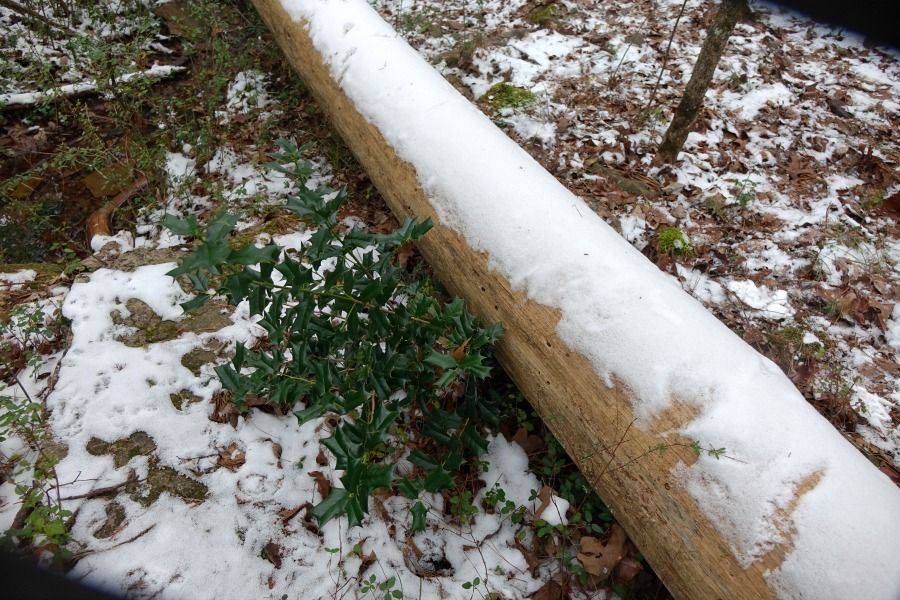 When a tree falls, it can crush other plants. My parents were upset that this pine deadfall was crushing the green little American Holly tree. On my visit, we cut out a section of that pine log - by handsaw!
When a tree falls, it can crush other plants. My parents were upset that this pine deadfall was crushing the green little American Holly tree. On my visit, we cut out a section of that pine log - by handsaw!
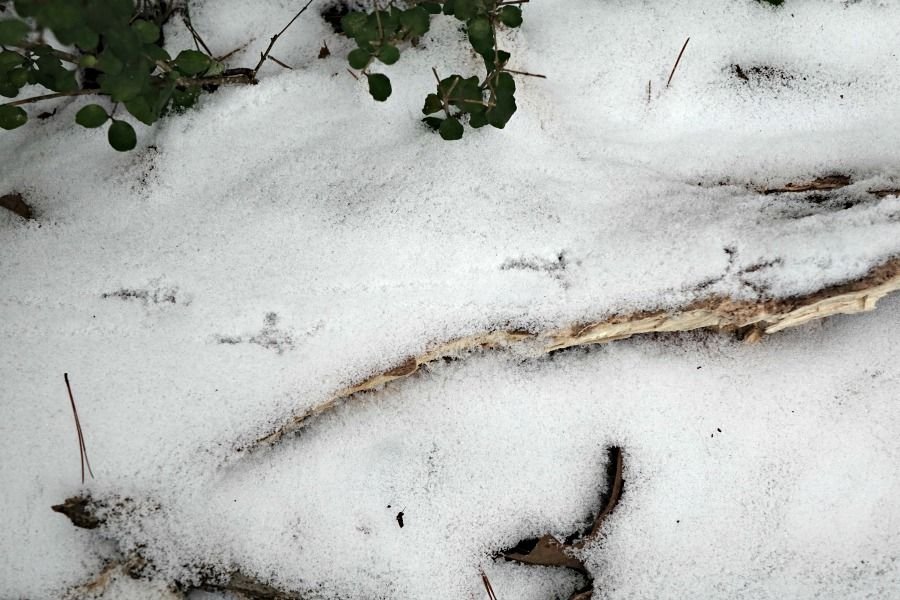 The birds like all those small trees. They give cover to the birds that hang out on the ground, looking for seeds. I can't tell exactly what kind of bird these tracks are from. But it's definitely a tiny bird that was walking instead of hopping.
The birds like all those small trees. They give cover to the birds that hang out on the ground, looking for seeds. I can't tell exactly what kind of bird these tracks are from. But it's definitely a tiny bird that was walking instead of hopping.
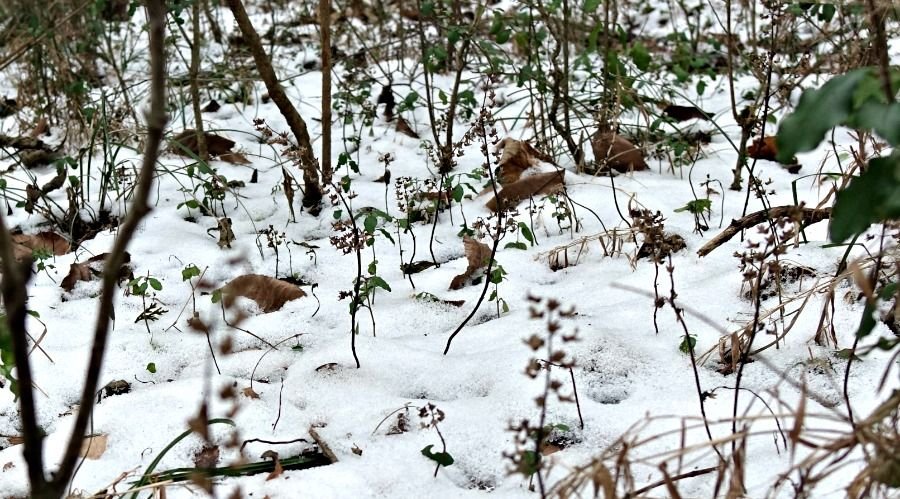 What kind of seeds do the birds look for? Lots of different kinds, of course. But these wild basil seeds are good. For people, too. They have that wonderful basil aroma and are good in spaghetti sauce! These plants aren't really a basil, but they are in the Mint family, just like basil. Folks also call it Calamint.
What kind of seeds do the birds look for? Lots of different kinds, of course. But these wild basil seeds are good. For people, too. They have that wonderful basil aroma and are good in spaghetti sauce! These plants aren't really a basil, but they are in the Mint family, just like basil. Folks also call it Calamint.
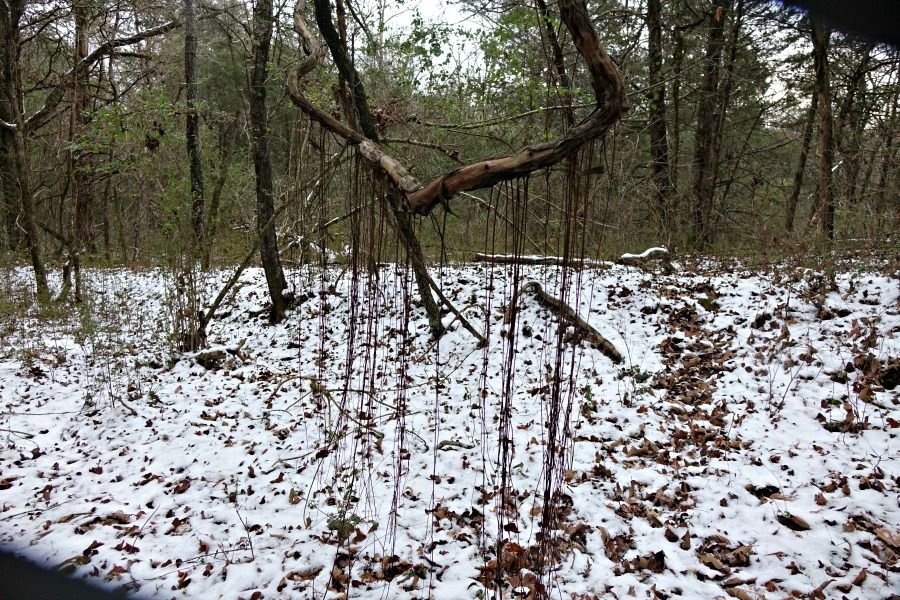 Here's another plant that's good to have -- the wild Muscadine grape. Those aerial roots that grow from the big vines down to the ground are so characteristic of Muscadines. My parents prune and trellis one that grows close to their house, more out in the sun than this vine. It's growing high into the trees to reach the sunshine! Wildlife likes to eat muscadine grapes, too.
Here's another plant that's good to have -- the wild Muscadine grape. Those aerial roots that grow from the big vines down to the ground are so characteristic of Muscadines. My parents prune and trellis one that grows close to their house, more out in the sun than this vine. It's growing high into the trees to reach the sunshine! Wildlife likes to eat muscadine grapes, too.
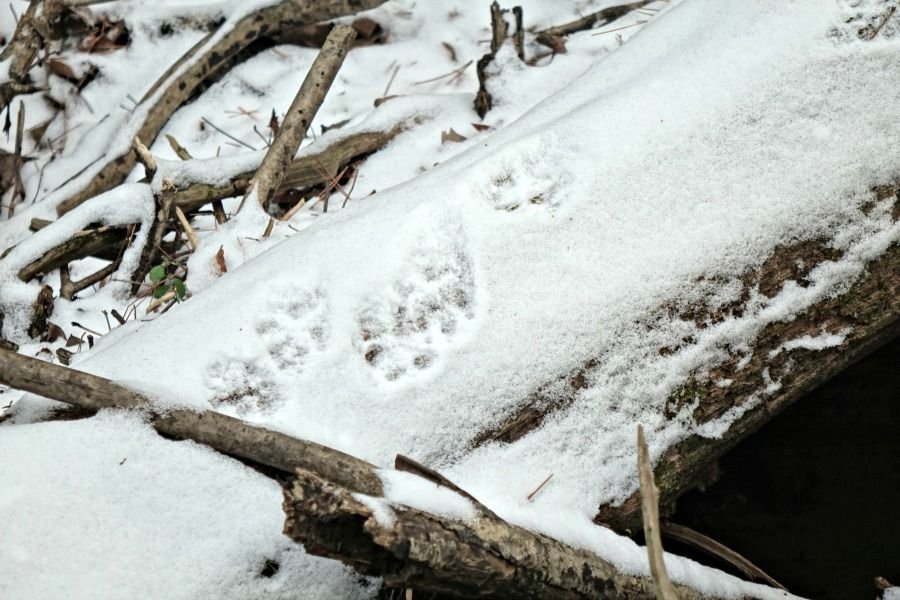 What kind of wildlife? This coyote! I know it's a coyote because the tracks showed it was walking all along the top of this down log. Dogs run around more, lol. Coyotes are efficient in their travels.
What kind of wildlife? This coyote! I know it's a coyote because the tracks showed it was walking all along the top of this down log. Dogs run around more, lol. Coyotes are efficient in their travels.
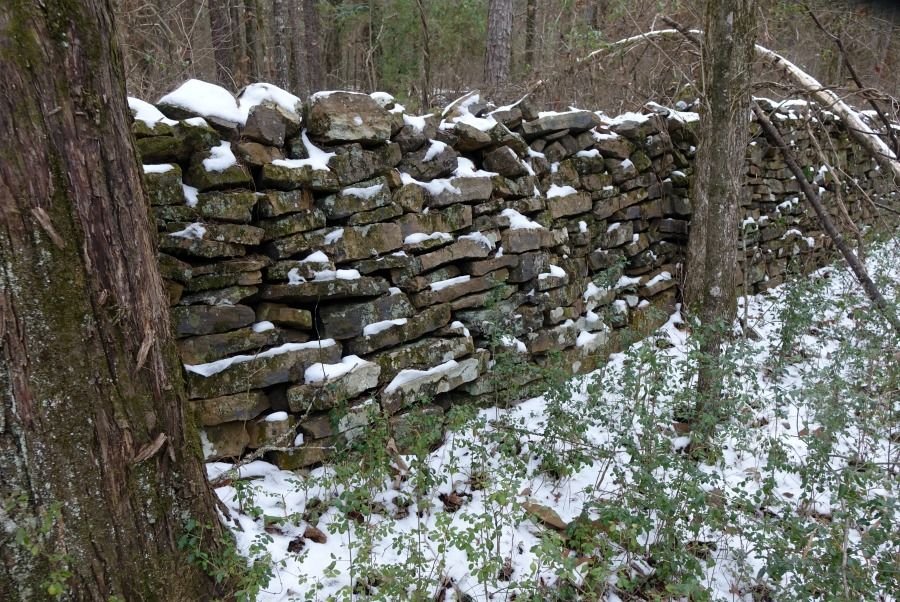 As we travel on our walk, these rock walls remind me how hard people had to work, to work this land. It used to be a farm, but the soil is so rocky. The most efficient way for folks to deal with the rocks was to move them all to the edge of the fields. That's a lot of work for hard-scrabble farming!
As we travel on our walk, these rock walls remind me how hard people had to work, to work this land. It used to be a farm, but the soil is so rocky. The most efficient way for folks to deal with the rocks was to move them all to the edge of the fields. That's a lot of work for hard-scrabble farming!
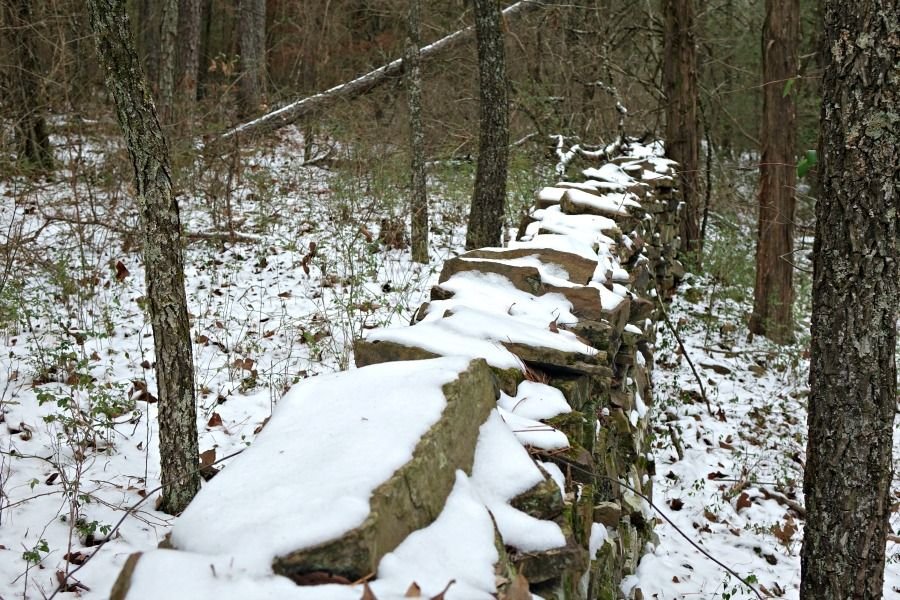 Well, that's a lot of photos! Let's take a break here at the rock wall. I'll start walking again, by this wall. If you come and walk with me, we'll see more animal tracks, a den, and mushrooms!
Well, that's a lot of photos! Let's take a break here at the rock wall. I'll start walking again, by this wall. If you come and walk with me, we'll see more animal tracks, a den, and mushrooms!
Thanks for walking with me!Thanks to @lyndsaybowes for the #walkwithme tag! Do you like to track animals in the snow?
Plant and Animal List
- Shortleaf pine - Pinus echinata
- Eastern red cedar - *Juniperus virginiana *
- Wild Basil or Calamint - Calamintha arkansana - seeds and leaves
- Muscadine grape - Vitis rotundifolia
- Gray squirrel - Sciurus carolinensis
- Coyote - Canis latrans
Haphazard Homestead
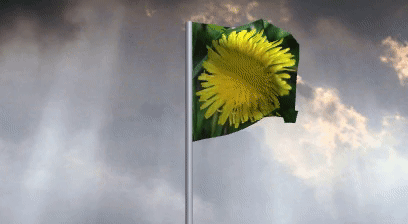 foraging, gardening, nature, simple living close to the land
All content is 100% Haphazard Homestead!My YouTube channel: Haphazard Homestead
foraging, gardening, nature, simple living close to the land
All content is 100% Haphazard Homestead!My YouTube channel: Haphazard Homestead












